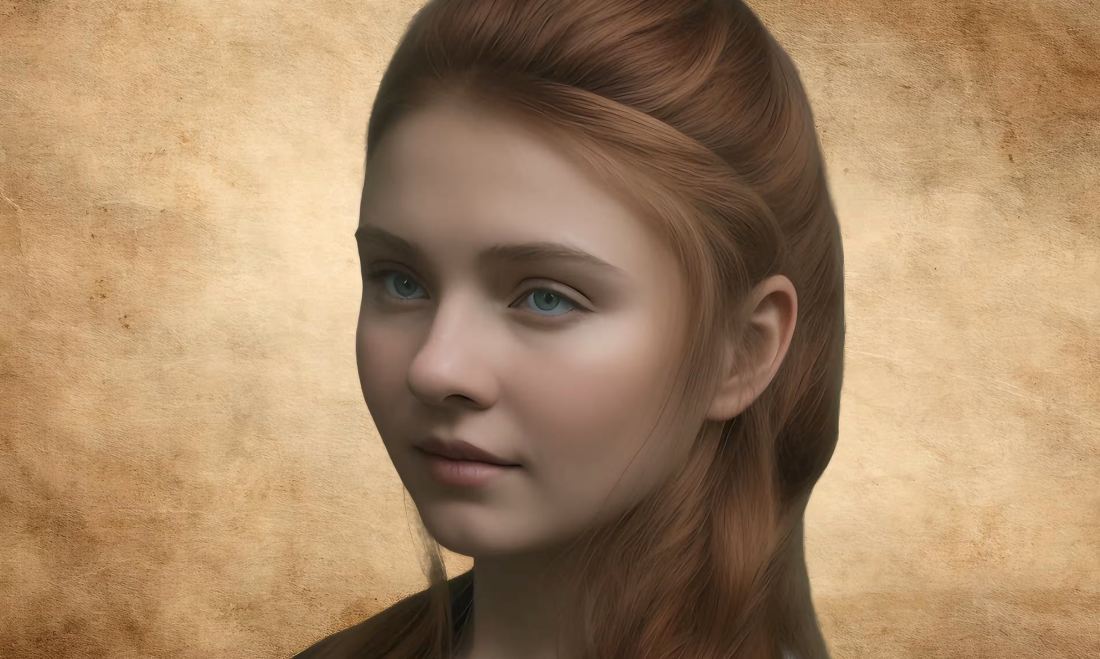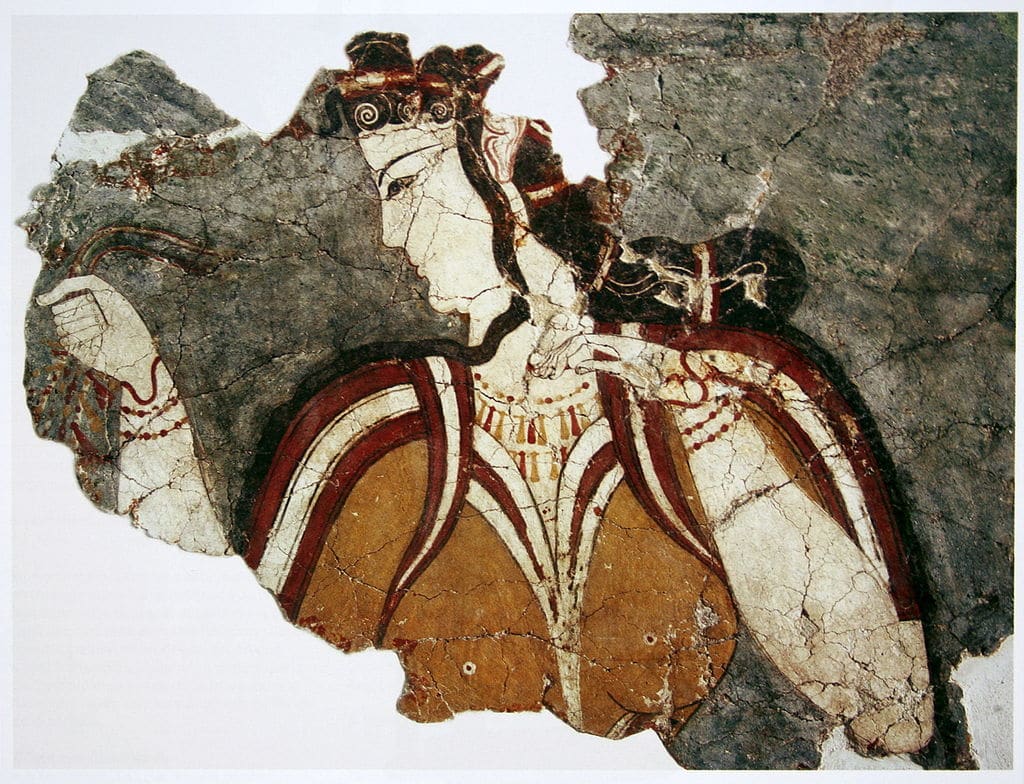

Recently, there has been a lot of talk about a digital reconstruction of a Mycenaean woman from 3500 years ago. Supposedly, this reconstruction provides us with insight into what this person really looked like all those years ago. However, there is some controversy surrounding this reconstruction. Is it really accurate, or is it more fantasy than fact?
First, let’s take a look at what we know for sure about this ancient woman. Archaeologists found her remains in the Grave Circle B at the ancient Greek city of Mycenae in 1951. Archaeologists date this grave complex to approximately 1650-1550 BCE.
One of the many human remains that the archaeologists uncovered there belonged to a woman buried alongside a man. Based on this, there was speculation that she was his wife. Another possibility is that she was the man’s sister.
Subsequently, genetic analysis has somewhat cleared up the issue. The man and the woman were relatives, apparently siblings. The similarities between their crania lends further support to this conclusion. Of course, this does not necessarily mean that they were not also married.
A further notable detail is that this Mycenaean woman, who seems to have died in her mid-thirties, exhibits the early stages of arthritis in her hands and spine.
In 1986 and 1987 a team of researchers from the University of Bristol, the University of Manchester and the Manchester Museum worked on examining the skulls from Grave Circle B and casting reconstructions of them.
Dr Emily Hauser, from the University of Exeter, is the author of the upcoming book Penelope’s Bones: A New History of Homer’s World Through the Women Written Out of It. The woman from Grave Circle B whose face was reconstructed is discussed in that book. Hauser commissioned digital artist Juanjo Ortega G to create a digital reconstruction of the woman’s face based on the cast of her head that was created in the 1980s.
Based on this information, it would seem that the image of her face that has been circulating the news recently is a reasonably accurate representation of what she really looked like. However, is this really so? Or are there some issues with this reconstruction that have been glossed over in most reportings of it?
This digital reconstruction of the Mycenaean woman is notable for a few reasons. It shows her with fairly light, almost ginger hair, as well as very pale skin and blue eyes. It could reasonably be said that she looks Nordic.
Due to this, some commentators have argued that this reconstruction provides new insight into what the Mycenaean Greeks looked like. In other words, this reconstruction demonstrates that our previous understanding of the appearance of the Mycenaean Greeks was not quite correct.
On the other hand, some critics have said that this reconstruction is inaccurate. They argue that the Mycenaeans would not have been so fair and pale. They insist that light hair and blue eyes is out of place in the Mycenaean world.
To help clear up this controversy, let us examine the facts about the digital reconstruction of this Mycenaean woman. Since the digital reconstruction is directly based on the clay reconstruction made by the University of Manchester, the authenticity of that clay model is of vital importance.
The team of researchers who studied the skulls and created the models were legitimate experts in their field, to be clear. Nevertheless, as with any field, this does not mean that they are above criticism. In fact, criticism has indeed be levelled against this particular reconstruction.
The issue is that the skull of this woman was nowhere near complete. Quite the contrary. The skull actually has a massive chasm in the centre of the face. In other words, essentially her entire face is missing. Notice what one critic wrote about this:
“Facial reconstruction research publications, however, rarely include how damaged, distorted or absent facial bones . . . were dealt with in order to estimate the relevant facial features . . . Indeed, one 3500 year-old cranium [the Mycenaean woman] is described displaying a ‘gaping chasm’ where the facial bones once were (Musgrave et al. 1995), and it can only be assumed, as it is not discussed in the research paper, that a complete absence of facial bones would have presented somewhat of a challenge during the facial reconstruction.”
Given that her actual facial bones are almost entirely missing, it is obvious that this reconstruction is extremely speculative.

However, the speculative nature of the face itself does not explain the coloring used in the digital reconstruction. The researchers did not apply any color to the clay model of the woman’s head. So, to include those features, what did the digital artist do?
Dr Emily Hauser explained to the Smithsonian magazine that the digital artist drew on inspiration from Bronze Age frescoes. Those from Santorini apparently served as particularly strong inspiration. Hauser explained that Juanjo Ortega G used “a striking image of a woman with red-gold hair and blue eyes” from Santorini as his main source.
While the Minoans were not the same as Mycenaeans, genetic studies show that they were closely related, as was their culture. For this reason, it is not unreasonable to use Minoan artwork to give us a general idea of what Mycenaean women might have looked like.
Nevertheless, we do have plenty of frescoes from Greece itself that we can use. From these frescoes and the Minoans ones, what does the evidence show? The evidence is clear that the women of these cultures generally had black hair. While fair hair and blue eyes no doubt did exist among the Mycenaean Greeks, such features were clearly not common.
Regarding the skin colour, these frescoes regularly depict women as having pale skin. This may be somewhat idealistic, given the contrast in this regard between male and female figures.
Nevertheless, this no doubt indicates that pale skin among women was a desirable standard. This was likely connected to the desirable concept of having the circumstances to stay inside, away from the sun.

Based on these facts, what can we conclude about the recent digital reconstruction of the Mycenaean woman? Does it provide new insights into the past? Unfortunately, it does not. Rather, something closer to the reverse is true. Pre-existing insights into the past are what guided this reconstruction.
Furthermore, as we have seen, this reconstruction does not follow what the average Mycenaean woman would have looked like. Why the digital artist decided to use a rare example of a fair-haired, blond-eyed Minoan woman from Santorini is a mystery.
There is nothing about the woman from Grave Circle B in Mycenae that suggests that she had anything other than a normal Mycenaean appearance. As such, it would surely have made more sense to follow the standard depiction of women in Mycenaean (and Minoan, for that matter) artwork.
While the pale skin may be correct, dark eyes and black hair might have been a more accurate choice. It is also notable that the digital reconstruction does not depict her as having a Mycenaean hairstyle. This is particularly strange, since the clay reconstruction created by Manchester University did give her an accurate hairstyle.
Even the face itself, regardless of the colouring, is speculative to the point of being almost valueless. The actual skull of this woman has a massive chasm in the centre, where her face was.
